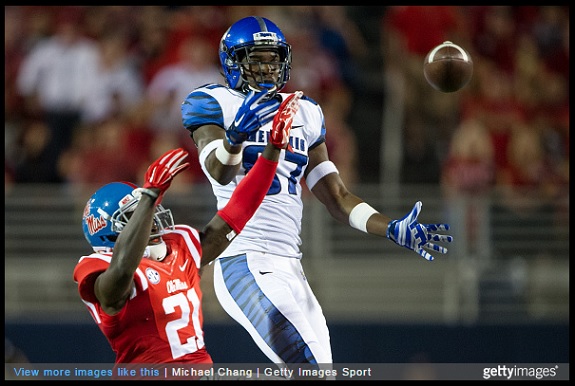Not a soul was surprised when the Pittsburgh Steelers used their second-round draft selection on Friday to draft a cornerback, after already taking an outside linebacker with their first-round selection. Cornerback and outside linebacker were the team’s two biggest needs, and the needs matched the value board.
Even though they hit on the right position, however, it came as quite a surprise to many that the player they came down with was Ole Miss cornerback Senquez Golson, who could fairly be regarded as a reach, at least in the sense that he likely could have lasted perhaps to the head of the third round, when adopting a global perspective.
But teams don’t always have the luxury of taking a global approach to the draft, and that especially comes into play when discussing the targeting of a specific player.
Rumor had it on Friday that the player the Steelers were targeting was actually tight end Maxx Williams, whom the Baltimore Ravens traded up three spots—one in front of the Steelers—to take. But general manager Kevin Colbert strongly and somewhat atypically, if indirectly, denied that report during his post-draft press conference.
In deference to what was reported, Senquez was targeted to be picked in the second round. Without a doubt, we were going to come out of that round with a corner, and that was never a discussion. In fact, we tried to trade up to secure Senquez Golson, just to set the record straight.
That is an unusually forthright answer from Colbert, who is often the master of vagary when it comes to addressing questions about how the front office works. Rather, this was information that he yielded voluntarily at the beginning of the press conference.
Which means that it’s either true and the Steelers want to make that clear, or that it’s false and the Steelers want to quash the perception that they had their target snaked away from them.
I believe the evidence supports the former, however, when considering that their pick was in immediately following the Ravens’ selection, much in contrast to those who painted the selection of Golson as a desperation move or a result of having been caught off guard. Had that been the case, they would have taken their time to make the selection.
The bottom line is this. Most likely, Golson would have lasted longer had the Steelers not drafted him with the 56th overall selection. It is entirely possible, though I would not go so far as to say probable, that he could have even lasted to their third-round pick with the 87th overall selection.
Many have argued that the Steelers could have traded back and picked up an extra draft pick. This is literally true, but it ignores the fact that this scenario requires a willing trading partner.
It also misses the main point, which is that the Steelers, at least outwardly, stayed true to their draft philosophy and their board by focusing on what they have in front of them rather than worrying about trying to project what everybody else was doing.
The merit of the selection itself can and most certainly will be debated, probably for years to come, and the ‘draft value’ of the pick will always be a part of that discussion. But at the end of the day, the Steelers came away with the cornerback that they coveted at a spot that they considered of good value.








